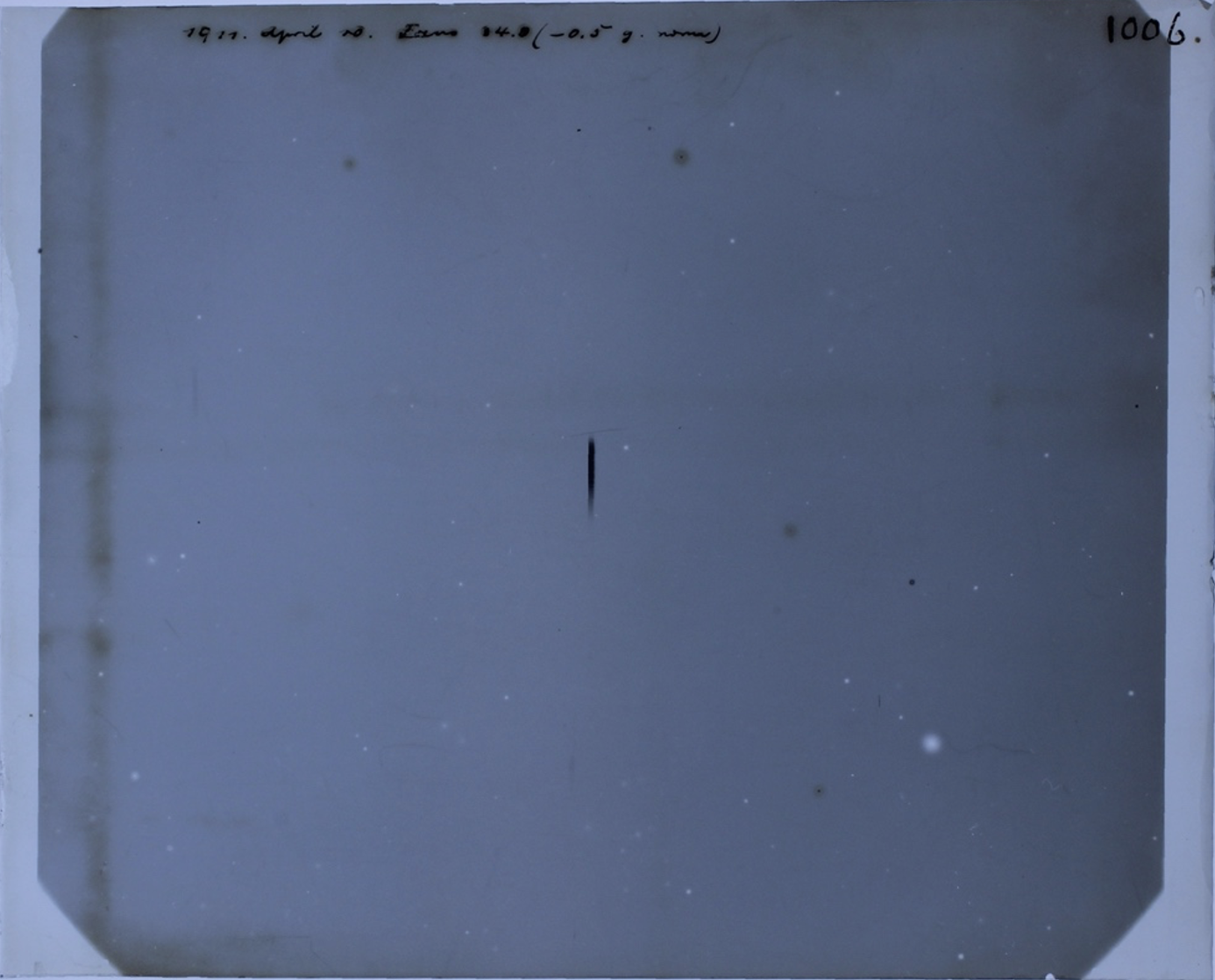H O W C A N I E X P R E S S T H E D A R K N E S S ?
Source Photography Writing Competition Entry 2022
On the 30th of June of 1927 Virginia Woolf wrote down, in her diary, a question which has reverberated through as many human generations as there has been: ‘How can I express the darkness?’
Thirteen years earlier, in December of 1915, from the front line of WW1 in Russia, a Jewish German physicist, Karl Schwarzschild – his name meaning ‘black shield’ or ‘black sign’– stumbled upon a dark monster when coming up with the first exact solution to the General Theory of Relativity. When too much mass was compressed into a small area, space would tear apart instead of bending, becoming infinitely curved, turning on itself, and collapsing.
Schwarzschild saw something without observing it. To humans, that is as rare of a thing as anyone can imagine.
Before the war, Schwarzschild’s passion for celestial mechanics led him to work with photographic glass plates, capturing light rays that have travelled for thousands of light years, effectively photographing the past, bending indexicality, making the impossible, possible. What many have said of photography, calling it a death mask turns stale: these plates are an expression of inconceivable possibility. Effectively, they are the universe seeing itself from the future.
A fire at once burning, and extinguished.
It is not a death mask, but a mirror reflecting a living fossil.
Light-radiating, fire-dancing cold stone.

Plate exposed by Karl Schwarzschild
4th October 1911
APPLAUSE (Archive of Photographic Plates for Astronomical USE)
Because human beings are intensely visual creatures, our languages and expressions are visual. We use visual metaphors and abstractions to describe the world around us and the worlds within us. Precisely because of this, Schwarzschild himself did not believe the monster he saw, and discarded it as a metaphysical anomaly, a dreadful mistake, an imaginary beast. In a letter to his wife, after discovering this anomaly, Schwarzschild wrote:
“I don’t know how to name it or definite it, but it has an irrepressible force and darkens all my thoughts. It is a void without form of dimension, a shadow I can’t see, but one that I can feel with the entirety of my soul.”
He said that the true horror of this region in space where gravity is so strong, nothing can escape from it, destroying anything that comes close enough, was that it is fundamentally unknowable, because it can’t be seen. Emits no light, reflects no light.
The darkness.
Eighty years later, a global network of eight radio telescopes collaboratively produced the first photograph of a supermassive black hole.
Six and half billion suns collapsed into a pinpoint.
The photograph itself is unremarkable, a donut like halo of hazy orange light in a semi symmetrical shape, surrounded by darkness, but not the same darkness that we find where our eyes converge, the centre of the circle. Two kinds of darkness, recognising each other.
But something else wants to happen here.
Something that interrupts that single story of forward, of progress. Something that doesn’t solve paradoxes, but leans into them.
From its first mathematical sight to the quality of its darkness, this giant, was officially named by Kimura, a Hawaiian language professor, of Powehi - Embelished dark source of unending creation – twisting this monster inside out, into a beautiful and busy creator. Darkness discovered and expressed, now dispelled, not by the light of science, but by living story, and the thing about stories is that you don’t need eyes to tell one, you need a mouth.
“How can I express the darkness?” becomes a question about visuality and its limits, about abstracts worlds, made from inscriptions, invisible to us because we can see. The paradox is that to express something you must first discover it, shine a light on it, see it, observe it, but by shining a light on darkness you dispel it, make it disappear. So, you need to go into the dark and believe what you see without the use of your eyes. This is the work of artists.
Virginia Woof continues: ‘All the being and the doing, expansive, glittering, vocal, evaporated: and the one shrunk, with a sense of solemnity, to being one-self, a wedge-shaped core of darkness, something invisible to others.’

Sagittarius A* Black Hole at the centre of the Milky Way
Observations in April 2017 / Completed in May 2019
ETH Collaboration
Figure References:
Figure 1: APPLAUSE www.plate-archive.org(Assessed 18th July 2022)
Figure 2: EHT https://eventhorizontelescope.org/blog/astronomers-reveal-first-image-black-hole-heart-our-galaxy (Assessed 18th July 2022)
References and Bibliography:
Indrany Suhendro. “Biography of Karl Schwarzschild:”. The Abraham Zelmonov Journal, Vol. 1, 2008.
Hawking, Stephen. Black Holes: BBC Reith Lectures.London: Batam, 2016.
Labatut, Benjamin. When we cease to understand the world.London: Pushkin Press, 2021.
Sobel, Dava. Glass Universe: The Hidden History of the Women Who Took the Measure of the Stars, London: Forth Estate, 2017.
Woolf, Virginia. A Writers Diary. London: Houghton Mifflin Hardcourt, 2003.
Woolf, Virginia. To the Lighthouse. London: Hogarth Press, 1927.
Newspaper articles:
https://www.nytimes.com/2019/04/13/science/powehi-black-hole.html